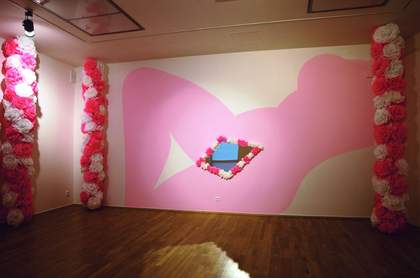Was ‘pop art’ a term used by yourself or colleagues or was there a different terminology that referred to a new figurative art movement in the 1960s and early 1970s?
In official art the term ‘pop art’ was not used, but a certain group of artists working outside the official circles were familiar with it; for me personally the expression ‘pop art’ was important and inspiring.

Jana Želibská
Kandarya – Mahadeva 1969
Collection Linea, Bratislava, Slovakia
© Archive of the artist
Did you ever consider yourself (now or in the past) a pop artist?
I do not consider myself to be a pop artist, but in the past I have used some expressive means of pop art in my work.
Did your work engage with current events in the 1960s and early 1970s?
Yes.
How did you choose the subject matter for your work included in The World Goes Pop?
The work Kandarya Mahadeva refers to Eastern philosophy – to the Indian temple. Other pieces tackle my personal themes and formally use elements of pop art.
Where did you get your imagery from (what, if any, sources did you use)?
From the contemporary art scene of the 1960s.
Were you aware of pop art in other parts of the world?
Yes, I was following the contemporary scene. I was also learning about pop art during my travels to foreign countries.
Was commercial art an influence on your work or the way in which it was made?
No.
Was there a feeling at the time that you doing something important and new, making a change…?
Of course, especially in Slovakia this represented a substantial change in the way art was perceived.
Was there an audience for the work at the time – and if so what was their reaction to it?
The audience existed: eager spectators accepted it with enthusiasm; the other, more conservative audience, was shocked by it.
Looking back at these works, what you do think about them now?
The works made at that time were excellent, full of energy and new visual elements. I fully stand behind them.
September 2015
